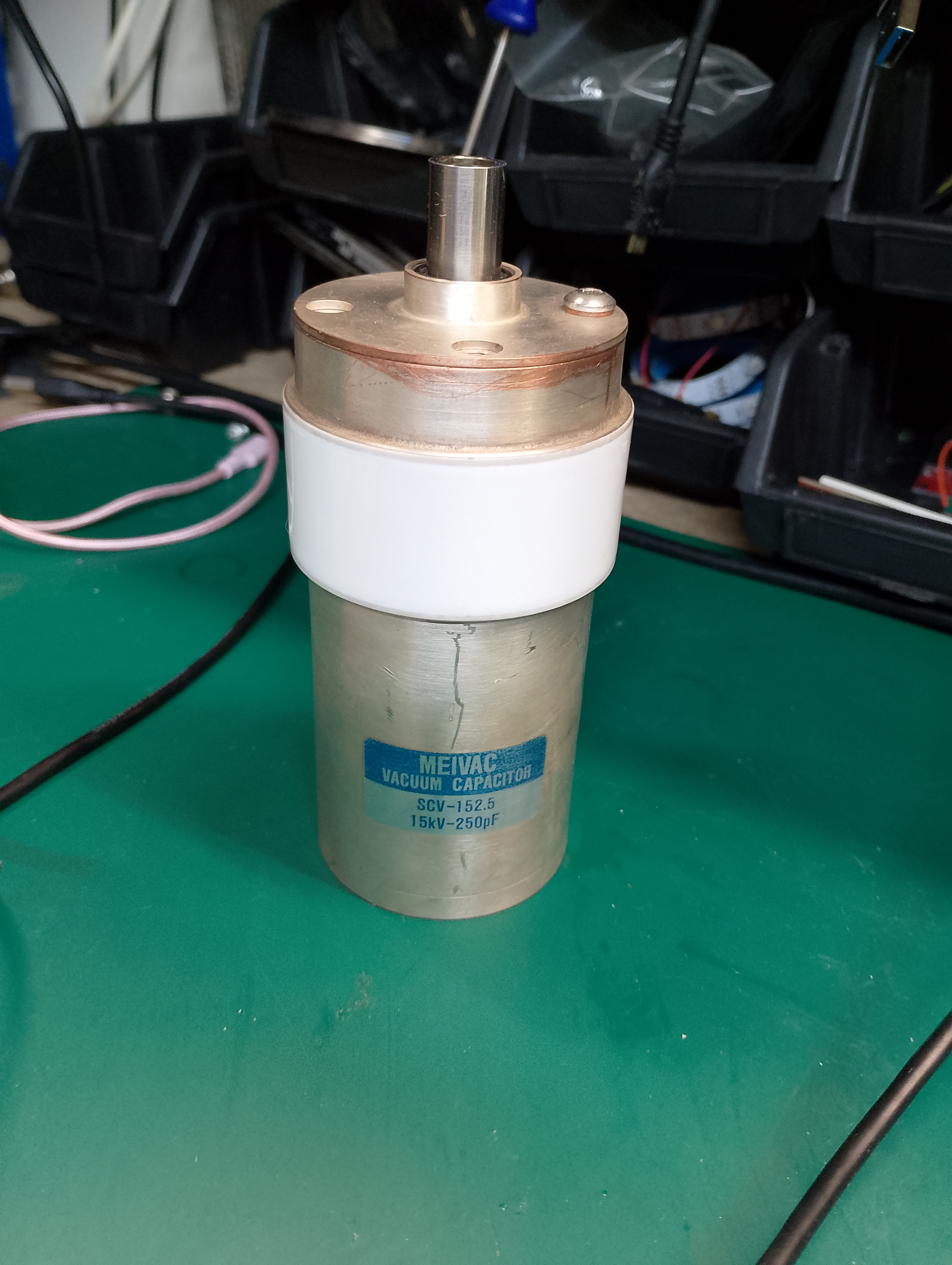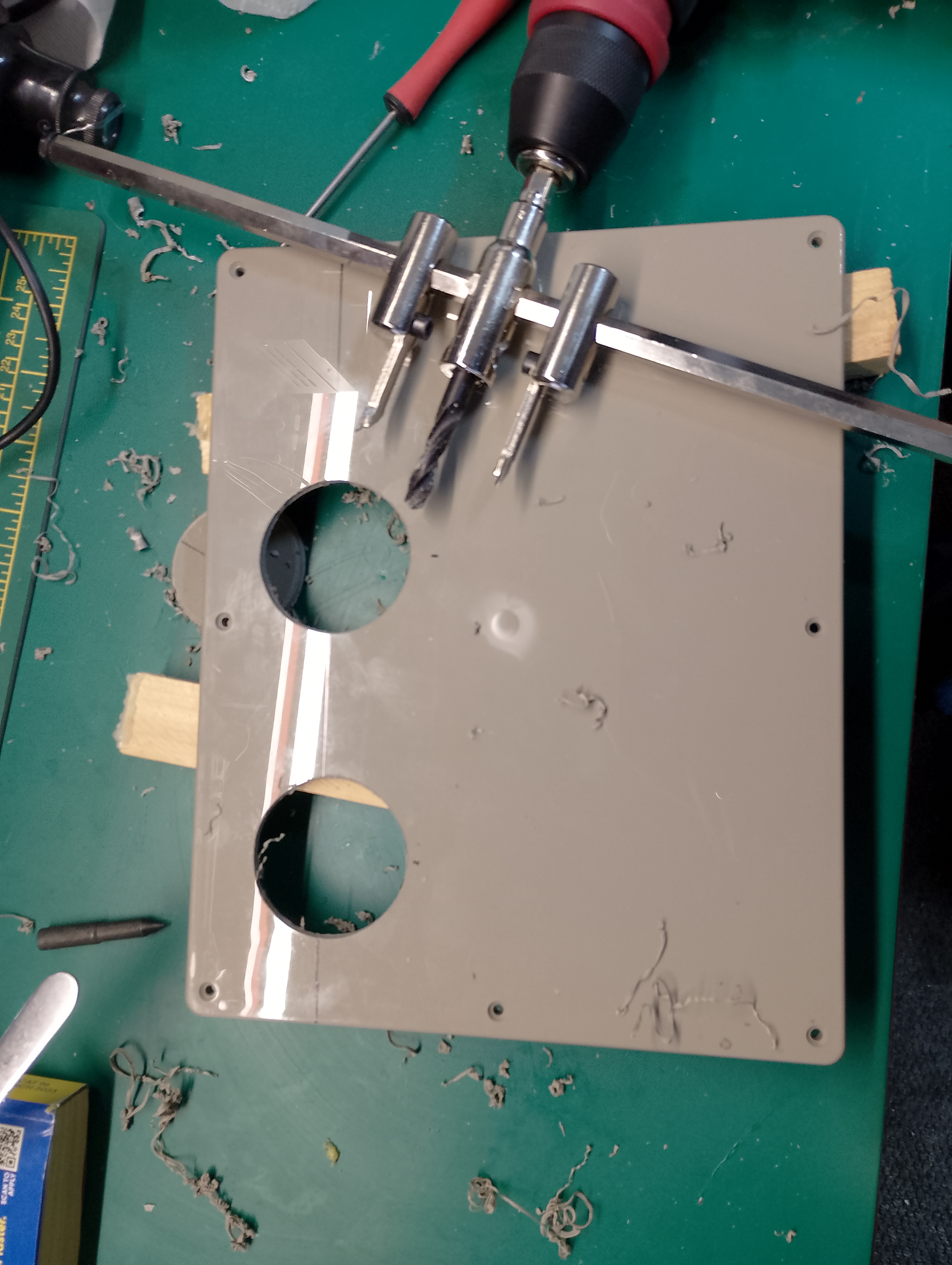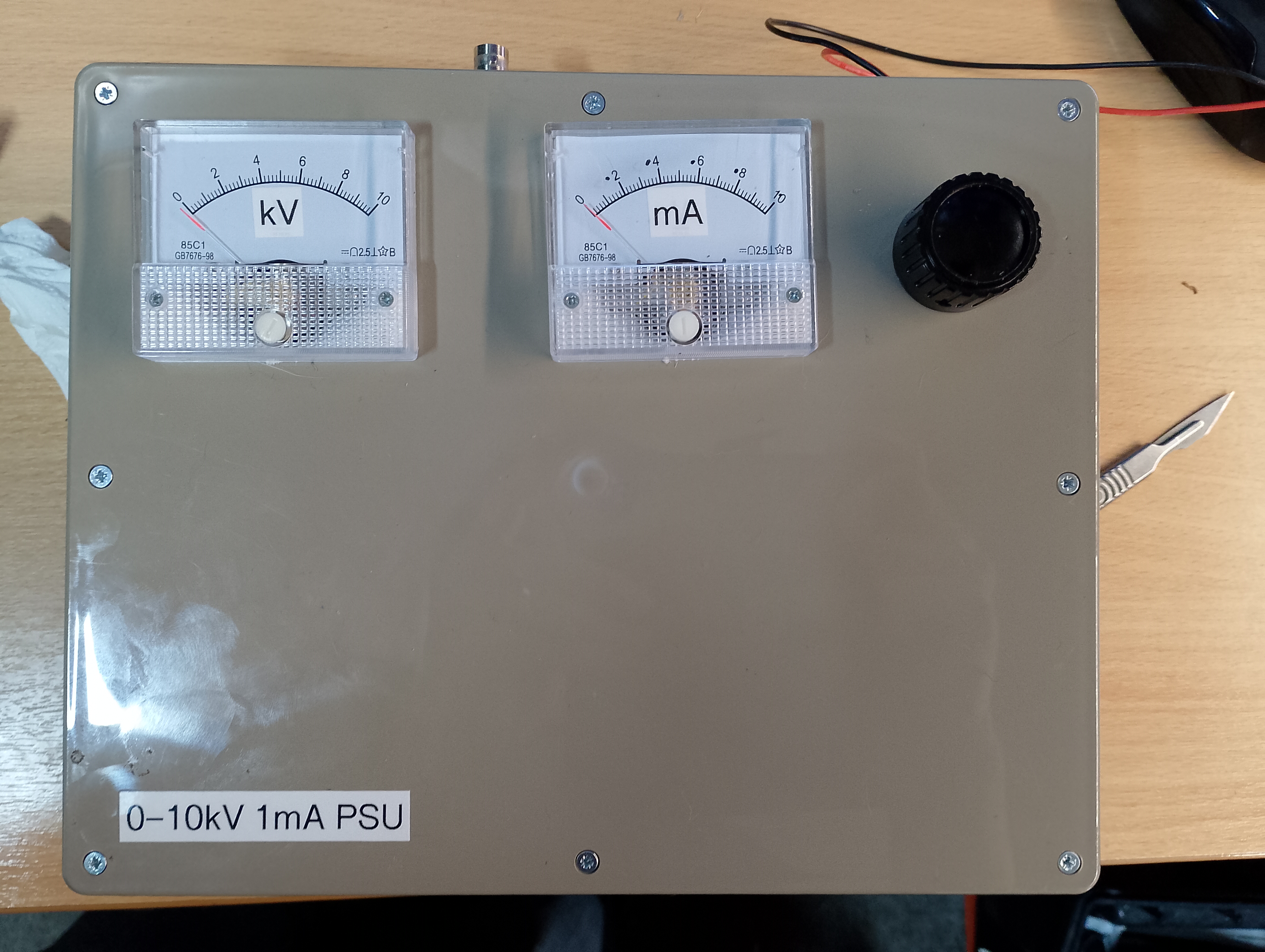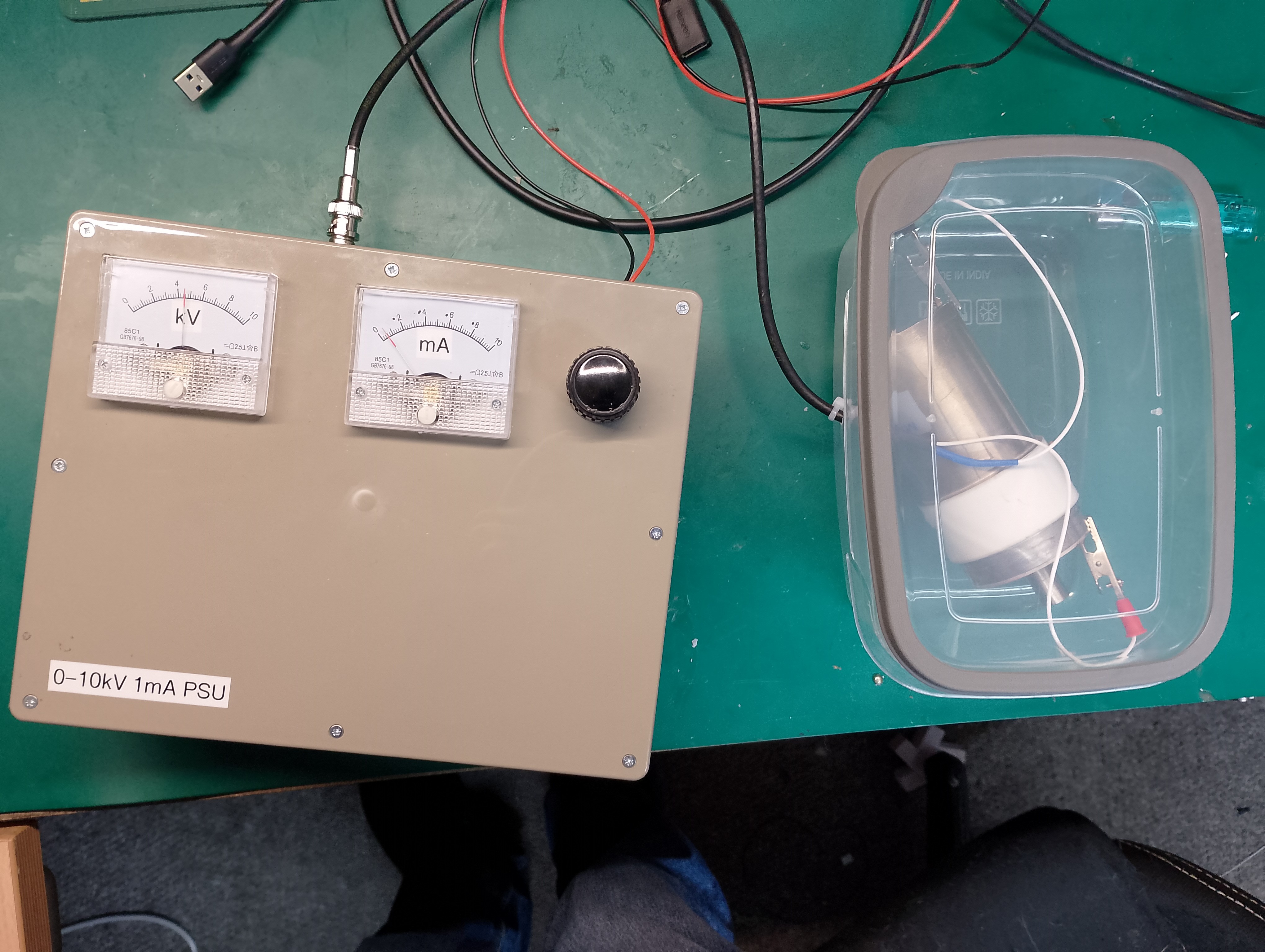Project Spicy
- published
Working where I do I’m lucky enough to constantly come across a steam of interesting stuff that’s heading off to landfill. With permissions from them upstairs I regularly take stuff home to play with or to re-use. It’s an excellent source of 1U cases for my equipment rack as well.
One of the more interesting things that are of use to radio amateurs are variable vacuum capacitors which can be used as part of an RF matching network. Commonly used as a matching capacitor for a Magloop these need to be able to withstand very high peak voltages.

This is one of the ones I commonly come across. The interesting bit is the vacuum - this allows the capacitor to be relatively compact while still resisting the high voltage arcing between the internal plates. I can easily test whether the bellows work and whether we’re getting the correct range of capacitance but until now I’ve had no way of checking the vacuum integrity of units that look ok from the outside.
Until now…
Another thing we get a lot of is power supply units capable of generating 10kV at 1mA. They have a bit of a bite. The most common one is the HP series from Applied Kilovolts. There’s a range of options - see the datasheet and the normal one we have just has a voltage monitor output so we can check the actual high voltage output without having to measure it from the spicy (high) side.
To check the vacuum integrity what I really wanted to monitor is the current. Now I could obviously have put a meter in the high voltage output but I’d have had to have a lot of space between me and the meter then to make it safe. However, an option for these units is a current monitor output and one of these finally fell into my grubby little mitts. The unit had been abused to death so may be a little noisy but that’s actually irrelevent for the purposes I intended to use it.
Now. I needed a box, cool - I had one I bought for a previous project that never got off the ground. I treated myself to two 0-10V moving coil meters from China on Ebay and decided to put it all together. I also treated myself to an adjustable hole cutter from Toolstation.
Note: I didn’t notice until it was too late that it was Silverline. Friends don’t let friends buy Silverline tools. It was assembled incorrectly and the pilot drill was useless from the word go.

It worked ok in the end. There’s also a potentiometer to allow me to adjust the voltage from 0 to 10kV. The output of the PSU is attached to an SHV connector. You don’t want to use normal BNC connectors for this, they’re not really designed for this sort of voltage.

I’ll be powering this from a normal lab bench PSU. NORMALLY you’d connect 0V to a real ground for safety reasons but because I like doing stupid things that may require it, I’ve left it floating. In normal operation I’ll be connecting it to the ground as well as 0V on the bench PSU.
Now for the safety bit. I obviously don’t want something at 10kV sitting on my desk lest I get distracted and give myself a shock. One Poundland lunchbox, a length of RG-58 and the mating SHV connector I had a test enclosure.

This has allowed me to test the capacitors I had lying around properly. Ideally we should be able to get them to 10kV without seeing any movement on the mA meter at all (This photo was from before I’d adjusted the zero offset). I now have a couple of capacitors ready to give to anyone who wants one for a Magloop project. Not bad for a few hours work and junkbox parts.